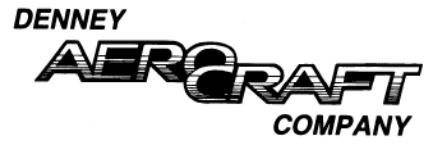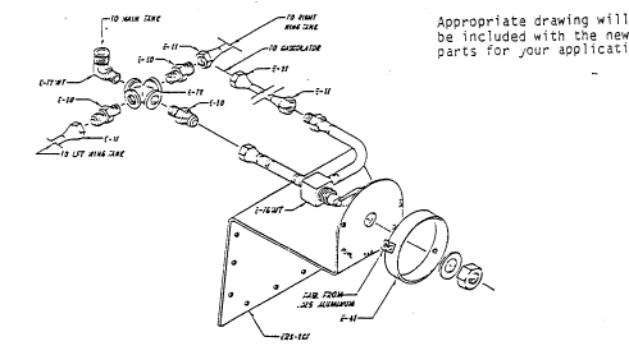|
|
|
SERVICE
BULLETIN #2 |
December
27, 1988
SUBJECT:
Fuel Valve/Fuel Line Modification
FROM:
Denney Aerocraft Company
Recently
a Kitfox™ with pilot and passenger were flying at low altitude when
the passenger inadvertently got his foot on the wing tank fuel line
and pulled the line off of the “T” in the main fuel tank outlet
line. Fuel started pouring into the cabin directly from the tank so
the main fuel shut off valve was rendered useless, the engine was
immediately shut off to prevent fire and set up to land on a nearby
road. Due to a stiff tailwind, the aircraft was not able to be put
down safely on the road. The aircraft overshot the road and went into
a corn field where it flipped on its back and sustained some damage to
the rudder, wings, cowling and prop.
Because
of this incidence, we are issuing a mandatory change in the
fuel line plumbing. We have developed a new system of routing the
plumbing the fuel lines which utilize swaged and flared fittings to
aluminum fuel lines. This system is adaptable to aircraft with no wing
tanks, with main tank and one wing tank, with main tank and two wing
tanks, and with two wing tanks and a header tank. The fuel shut-off
valve will mount on a new bracket attached to the end of the starter
shroud bringing it closer to the pilot. In addition, it incorporates
an aluminum guard to shield the lines from foot interference. This new
system will preclude any accidental disconnection of the fuel line.
Enclosed
are the appropriate drawings for installing the different fuel tank
systems.
The
cost of the fuel valve modification for the different fuel tank
systems are as follows:
If
you have:
Main
fuel tank only
$33.45
Main fuel tank and 1 wing tank
$49.75
Main Fuel tank and two wing tanks
$53.75
Two wing tanks and header tank
$33.45
If you send back the old E-27 Main fuel valve, we will give you a credit of $6.00 if it is still
|
|
|
If
you need assistance in any way, please call customer service. Before
returning any items to Denney Aerocraft
Co. please obtain a Return Goods Authorization (RMA)
number from customer service. |
We
have also discovered a problem with the routing of the fuel lines on the
wing tanks. When the airplane is on the ground with low fuel quantity
the fuel has to flow up slightly over the front of the door opening. The
fuel will not always gravity feed through this and must start siphoning
in order to start the proper fuel flow. To avoid this we are recommending
a change in the routing of the wing tank fuel line.
To
re-rout the fuel line, run the Neoprene fuel hose out of the wing tank
aft to the diagonal brace behind the pilot or passenger’s head.
Connect the rudder hose to the aluminum fuel line with hose clamps. Run
the aluminum tube starting about 4” down on the diagonal brace.
Continue down to the rear seat bulkhead then routing the line down the
seat half way and make a smooth curve back under to the left side just
below the door opening. Extend the tube just under the door frame to
approximately 6” in front of the front seat truss. Attach the WT-7
Fuel Valve Plate to the underside of the fuselage door frame tubing at
this point. Connect aluminum tube to both sides of the valve with flare
fittings. Continue the fuel line forward and up the diagonal fuselage
tube running from the bottom corner of the door frame to the middle
engine mount. Make the smooth curve with the fuel line to run the fuel
line up against the horizontal tube on the firewall. Keep the fuel line
up out of the way of feet much as possible. Secure the fuel line in
place using plastic tie wraps or similar material to the fuselage
tubing. Make sure the tie wraps do not interfere with the fabric
covering or rudder cable. Continue the fuel line over the main fuel
valve system and connect with the E-81 5/16” flare nut. If you have
the Full Instrument Panel option, run the aluminum fuel line up to the
header tank inlet and connect with the Neoprene hose and hose clamps as
called for in the instructions.
Run the fuel line for the other wing tank (if utilized) in the same manner on the other side of the fuselage.

